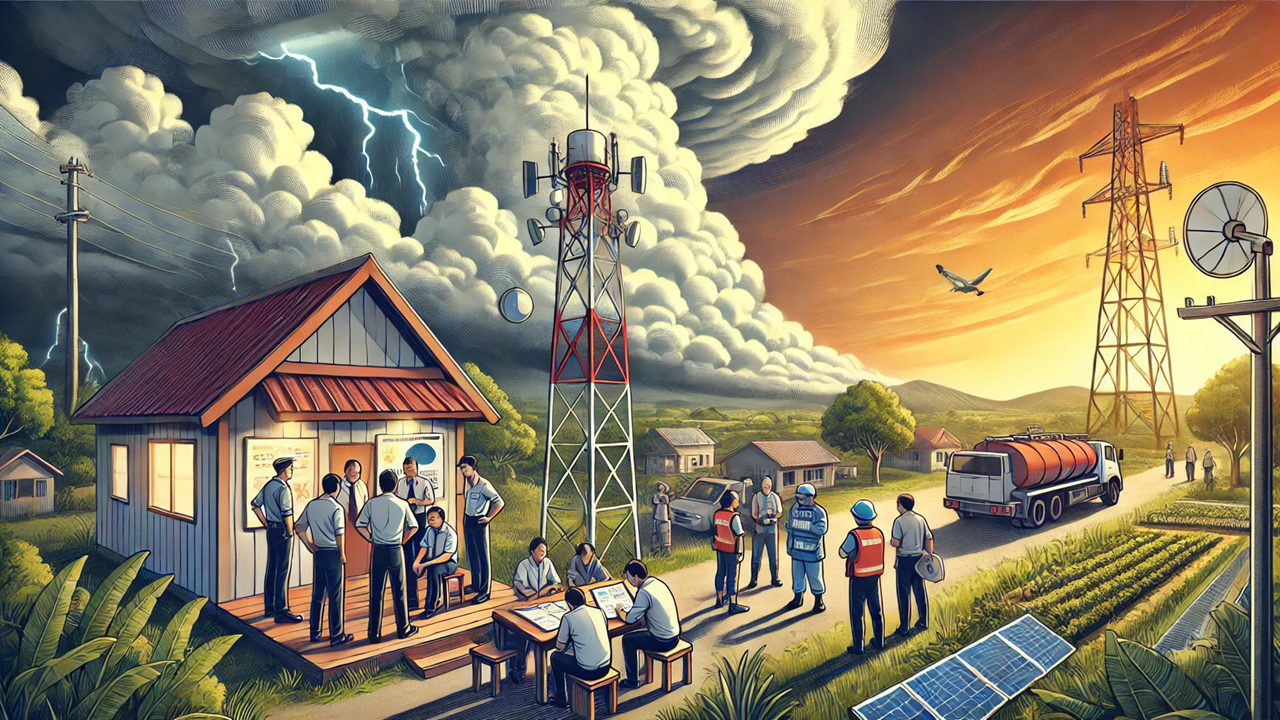Proactive Preparedness: UNDP’s Shift from Crisis Response to Risk Anticipation
The UNDP’s latest report, “Getting Ahead of the Crisis Curve: UNDP’s Approach to Multi-Hazard Early Warning and Preparedness”, underscores the importance of moving from reactive crisis responses to proactive early warning systems. This human-centered approach aims to reduce disaster risks, safeguard development, and build resilient communities, aligning with global sustainability frameworks like the 2030 Agenda and the Paris Agreement. With a focus on people-centered solutions, inclusive engagement, and breaking down silos, UNDP advocates for sustainable funding and comprehensive data-driven decisions to better prepare the world for future crises.

The United Nations Development Programme’s (UNDP) latest report, “Getting Ahead of the Crisis Curve: UNDP’s Approach to Multi-Hazard Early Warning and Preparedness”, champions a fundamental shift in how we prepare for crises. Moving from a reactive response system to one based on early warnings and proactive preparedness, UNDP emphasizes the need for robust, multi-hazard early warning systems (MHEWS) that save lives, protect livelihoods, and ensure long-term development.
From Response to Anticipation
Traditionally, disaster management has often focused on reactive strategies—responding to crises after they have occurred. However, the rising frequency and intensity of natural disasters and climate-related emergencies have revealed the limitations of this approach. UNDP’s report advocates for a paradigm shift, promoting anticipatory action that allows individuals, communities, and governments to make informed, timely decisions.
Multi-hazard early warning systems (MHEWS) lie at the heart of this strategy. These systems combine data on potential hazards, population exposure, and community vulnerability to assess risks and provide timely alerts. By doing so, MHEWS enables communities to take preventative measures before disasters strike, significantly reducing the impact of natural or human-caused events such as floods, earthquakes, or industrial accidents.
In the last decade, UNDP has spearheaded early warning and preparedness initiatives in over 90 countries, mobilizing over $2 billion in support. These initiatives have not only saved lives but have also protected infrastructure and development gains, proving that preparedness pays off in the long run.
Aligning with Global Agendas
UNDP’s approach to early warning and preparedness is fully aligned with global frameworks aimed at sustainability and disaster risk reduction. The 2030 Agenda for Sustainable Development, the Paris Agreement, and the Sendai Framework for Disaster Risk Reduction all emphasize the need for proactive measures that address vulnerabilities before they turn into crises.
Through these frameworks, early warning systems are positioned as critical tools for governments and communities to safeguard development. UNDP’s efforts in this area support several of the United Nations Sustainable Development Goals (SDGs), particularly those related to poverty reduction, health, climate action, and peaceful societies.
Recognizing the immense value of early warning systems, the UN Secretary-General launched the Early Warnings for All Initiative in 2022, a bold vision to ensure that every person on Earth is protected by early warning systems by 2027. This initiative further emphasizes the critical need for preparedness and its integration into national and local policies.
Key Principles of Effective Preparedness
The effectiveness of early warning and preparedness initiatives depends on several key principles, as outlined by UNDP. First and foremost is the need for people-centered solutions. Early warning systems should not just be technical solutions; they must actively involve the communities they serve. This means engaging local stakeholders, incorporating indigenous knowledge, and making sure that marginalized groups—such as women, youth, the elderly, and people with disabilities—are not left behind.
Inclusive engagement is another critical principle. Early warning systems must integrate local narratives and social dynamics to prevent exacerbating existing inequalities or tensions. By making these systems accessible and understandable for all, they empower individuals and communities to act swiftly when disaster strikes.
UNDP also highlights the need for breaking down silos within government agencies, private sectors, and non-governmental organizations (NGOs). Disasters are complex, and effective preparedness requires collaboration across sectors and disciplines. This includes using comprehensive data that draws from a wide range of sources to create a holistic picture of risks and vulnerabilities.
Lastly, sustainable governance and financing are crucial to making early warning systems viable. UNDP urges governments to invest in preparedness, rather than focusing resources overwhelmingly on emergency response. Strengthening governance frameworks and ensuring that preparedness systems are funded and maintained over the long term are essential for building resilient societies.
The Path Forward
Despite significant progress, there is still work to be done. A third of the world’s population—particularly in Least Developed Countries (LDCs) and Small Island Developing States (SIDS)—remains uncovered by early warning systems. UNDP calls for increased global collaboration to address this gap, improve investment tracking, and ensure the sustainability of preparedness initiatives.
The economic benefits of early warning and preparedness systems cannot be overstated. By reducing the costs of recovery and reconstruction, these systems save not only lives but also significant financial resources. Preparedness also fosters stronger community resilience, helping societies recover more swiftly from crises.
As the world faces an uncertain future with escalating risks from climate change and other hazards, proactive preparedness is no longer a choice; it is a necessity. UNDP’s approach provides a blueprint for how countries can shift from reactive to anticipatory disaster management, safeguarding their development gains and building a more resilient global community.
- FIRST PUBLISHED IN:
- Devdiscourse










